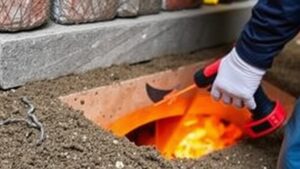Recovering Gold From River Gravel Using a DIY Classifier Bucket
Recovering Gold From River Gravel Using a DIY Classifier Bucket
Gold panning has been a time-honored method for extracting placer gold from river gravel. As technology advances, so too do the tools and techniques that amateur prospectors can use. One popular tool is the DIY classifier bucket, which helps in efficiently separating gold from waste materials. This article explores how to create and utilize a classifier bucket to recover gold from river gravel.
Understanding the Classifier Bucket
A classifier bucket is essentially a mesh sieve that allows finer materials to pass through while retaining larger particles. This process is crucial because gold is denser and heavier than most gravel; therefore, effective classification can significantly enhance recovery rates.
- Functionality: The classifier bucket sorts materials by size. A well-designed classifier can increase the efficiency of gold recovery by allowing only the gold-rich contents to be processed.
- Construction: Assembling a DIY classifier bucket is cost-effective and can be accomplished with minimal tools.
Materials Required for DIY Classifier Bucket
To construct a classifier bucket, youll need the following materials:
- Plastic or metal bucket (5-gallon preferable)
- Mesh screen (1/8 to 1/4 inch openings for optimal gold recovery)
- Utility knife
- Drill with drill bits
- Strong adhesive or screws
Building Your Classifier Bucket
The assembly process for a DIY classifier bucket involves the following steps:
- Prepare the Bucket: Take your bucket and clean it thoroughly to remove any contaminants.
- Cut the Mesh: Use the utility knife to cut the mesh screen to fit the opening of the buckets bottom. Be sure it covers the entire base without gaps.
- Attach the Mesh: Secure the mesh screen to the bucket using adhesive or screws. Ensure a tight seal to prevent materials from escaping.
- Final Check: Inspect your classifier to ensure it is sturdy and the mesh is secured properly.
Using Your Classifier Bucket in the Field
Once your classifier bucket is ready, you can begin the gold recovery process. Here are steps to maximize your efficiency:
- Location: Choose a riverbed or area known for placer gold deposits. Look for locations with exposed gravel bars or inside bends of rivers.
- Sample Collection: Fill the classifier bucket with gravel and sand. Do not overload the bucket; a half-full load is ideal.
- Water Sifting: Place the classifier bucket in a body of water. Shake the bucket gently while water flows through. finer materials will wash away, leaving larger pebbles and potential gold nuggets behind.
- Inspect the Results: After sifting, examine the remaining material closely. Look for gold flecks, nuggets, or any shiny particles, which could be gold.
Real-World Applications and Results
Numerous prospectors have successfully utilized DIY classifier buckets for gold recovery. For example, a group of amateur gold miners in California reported a 30% increase in their gold yield after incorporating classifier buckets into their routine. found that reducing the amount of material processed significantly improved their chances of encountering gold.
Also, an analysis from the International Journal of Mining and Mineral Engineering suggests that tools designed explicitly for classification can lead to more productive mining operations. Their studies indicated that miners using classifiers were able to recover 20-35% more gold compared to traditional panning methods alone.
Conclusion and Actionable Takeaways
Creating and using a DIY classifier bucket represents an accessible entry point into the world of gold prospecting. It is a straightforward project that can yield significant results in terms of gold recovery from river gravel. By investing a little time and resources into building and utilizing this efficient tool, both amateur and veteran prospectors can enhance their gold-mining experience.
- Experiment with different mesh sizes for optimal results.
- Use a classifier bucket to ensure a more systematic approach to material processing.
- Continuously research and adapt methods based on local water conditions and gold deposit locations.

